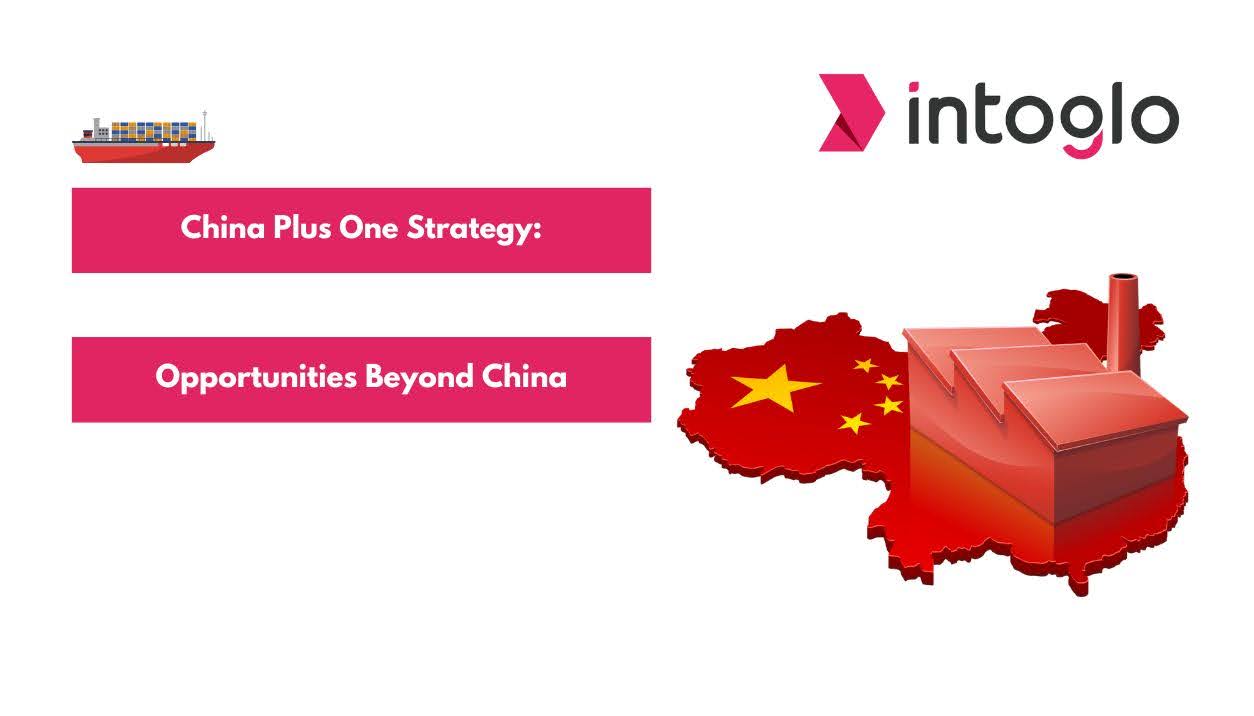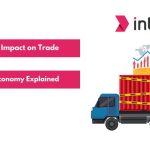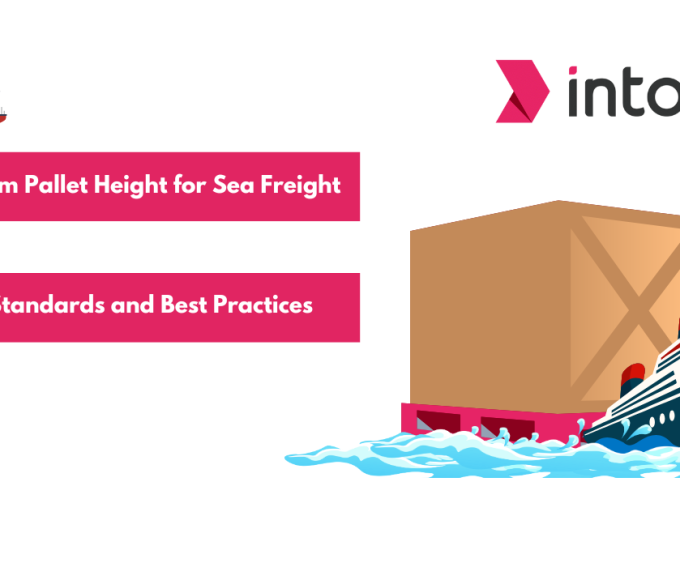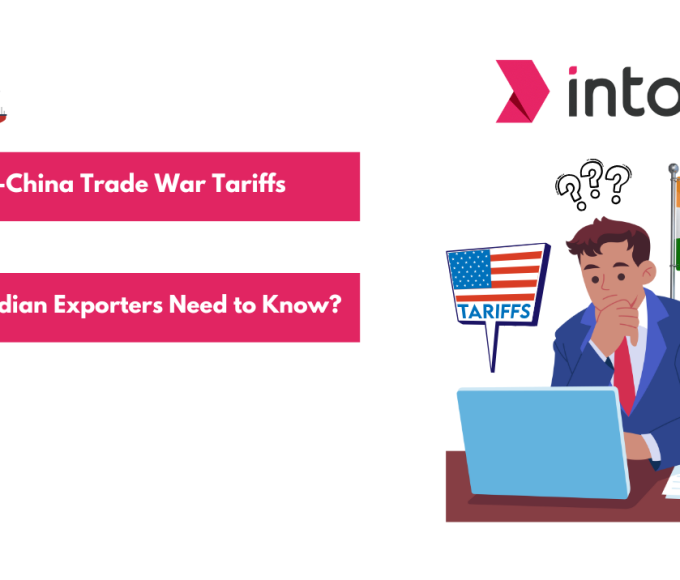For decades, China has held a unique position as the world’s manufacturing powerhouse, offering unmatched scale, cost-efficiency, and infrastructure that made it the default choice for global production. However, recent geopolitical and economic shifts have exposed the vulnerabilities of overreliance on a single source. This is where the China Plus One strategy, also known as C+1, comes into play.
The strategy gained momentum following the U.S.-China trade war initiated during the Trump administration, which triggered tariffs, supply chain disruptions, and rising trade tensions. Add to this the sweeping impact of China’s Zero COVID policy, which led to prolonged factory shutdowns and bottlenecks across industries, and it became clear: relying solely on China posed substantial risks.
The China Plus One approach is a response to these wake-up calls. It encourages businesses to maintain a presence in China while strategically expanding to alternative manufacturing hubs like India, Vietnam, or Mexico. This isn’t just about hedging risks—it’s about unlocking new markets, accessing untapped labor pools, and ensuring continuity in a rapidly changing global trade environment.
As exporters, understanding this shift can help you make smarter decisions about where to manufacture, source, and invest next.
What is China Plus One Strategy?
The China Plus One strategy is a business approach where you expand your manufacturing or supply chain operations beyond China by adding at least one other country to your production mix. This doesn’t mean you stop working with China altogether; instead, you reduce your dependence on it as the sole manufacturing base.
The idea is to spread your risks by diversifying where you make or source your products, so if disruptions happen in China-whether due to trade tensions, rising costs, or other factors-your business can keep running smoothly. By adopting China Plus One, you can also tap into new markets, benefit from lower labor costs in other countries, and improve your supply chain’s flexibility and resilience.
Countries like India, Vietnam, Thailand, and Mexico are popular choices for this strategy, offering alternatives that complement your existing operations in China.
The Impact of China’s Zero-COVID Policy
To highlight the economic impact of China’s zero-COVID policy and provide context for the “China Plus One” strategy, you can use the following comparative GDP per capita data and key statistics:
China’s GDP Per Capita vs. Regional Peers (2024–2025):
| Country/Region | GDP per Capita (USD, 2024/2025) |
| China | $13,445–$13,690 |
| Vietnam | $4,081 (2024 est.) |
| India | $2,088 (2024 est.) |
| Bangladesh | $2,700 (2024 est.) |
| Hong Kong SAR | $56,030 (2025 est.) |
| South Korea | $34,640 (2025 est.) |
| Singapore | $92,930 (2025 est.) |
The zero-COVID policy contributed to slower growth and highlighted vulnerabilities in China’s supply chains, prompting global companies to diversify production to neighboring countries with lower labor costs and less restrictive pandemic responses.
Why are Companies Adopting the China Plus One Strategy?
No company wants to be caught off guard by sudden disruptions. Over the past few years, companies have seen how quickly things can change due to geopolitical tensions, trade wars, or even unexpected policy shifts in China. By spreading your operations to other countries, you’re not just reacting to today’s challenges-you’re building a more stable future for your business.
Another big driver is cost. China’s labor and production expenses have been rising, making it less attractive as the sole manufacturing hub. Countries like India, Vietnam, and Thailand now offer competitive labor costs, tax incentives, and access to specialized skills, which can help you save money and maintain your margins.
There’s also the lure of new markets. When you expand into different countries, you can tap into fresh consumer bases and diversify your revenue streams. Plus, having suppliers and partners in multiple locations makes your supply chain more resilient to shocks, whether from natural disasters, pandemics, or global shipping issues
Pros and Cons of the China Plus One Approach
The China Plus One strategy offers numerous advantages but also comes with certain challenges. Here are pros and cons of this approach:
Pros
- Reduced Risk and Diversification: By expanding operations to another country, businesses reduce their reliance on China. This diversification helps mitigate risks related to geopolitical tensions, trade tariffs, or supply chain disruptions.
- Cost Efficiency: Rising labor costs in China have eroded its traditional cost advantage. For instance, average manufacturing wages in China have more than doubled in the past decade, prompting companies to seek lower-cost alternatives like Vietnam, India, and Bangladesh.
- Access to Emerging Markets: Establishing operations in other countries allows businesses to tap into emerging markets. These regions may offer new growth opportunities, enabling businesses to increase their global presence and cater to local demand more efficiently.
- Supply Chain Resilience: A diversified supply chain is less vulnerable to disruptions in one region. In the event of natural disasters, political instability, or pandemics, having alternative production sites allows companies to maintain steady production and meet demand without major delays.
- Improved Trade Relationships: By spreading operations across multiple countries, businesses can take advantage of favorable trade agreements or regional free trade zones. For example, exporting from Southeast Asia may provide better access to the ASEAN market or the European Union through trade agreements like RCEP (Regional Comprehensive Economic Partnership).
Cons
- Increased Complexity: Managing operations across multiple countries introduces added complexity. Coordinating supply chains, production schedules, and logistics can become more challenging, requiring businesses to invest in better management systems and local expertise.
- Higher Upfront Investment: While long-term savings can be significant, setting up manufacturing or sourcing operations in a new country often requires substantial upfront investment. This includes costs related to establishing infrastructure, hiring local staff, and navigating regulatory environments.
- Cultural and Regulatory Differences: Operating in a new country means dealing with different business practices, languages, and regulations. The learning curve can be steep, and any mistakes made in compliance or cultural missteps can lead to delays, fines, or damage to the brand’s reputation.
- Supply Chain Disruptions: While diversifying production helps reduce the risks of relying on a single country, it also introduces new risks. Managing multiple suppliers and production sites can lead to unforeseen disruptions in one of the regions, which could affect overall supply chain efficiency.
- Intellectual Property Risks: Expanding operations into countries with weaker intellectual property protections can expose companies to the risk of counterfeiting or intellectual property theft. It’s important for businesses to consider the strength of IP laws in their new market and take steps to protect their designs and products.
The China Plus One strategy offers several benefits, especially in terms of risk reduction and cost-efficiency. However, businesses need to carefully consider the challenges of managing complex, multi-country operations and invest in the necessary resources to make the strategy work.
As businesses diversify their supply chains beyond China, efficient and reliable logistics from emerging hubs like India to the USA become essential. Intoglo offers comprehensive door-to-door FCL shipping, customs clearance, and end-to-end supply chain management from India to the USA, tailored to support your China Plus One strategy.
Request a customized quote from Intoglo today to ensure smooth, compliant, and timely delivery for your India-to-USA operations.
China Plus One: Sector-Wise Benefits for Indian Exporters
The China Plus One strategy is creating tangible opportunities for Indian exporters across several key sectors, especially as global companies seek alternatives to China for manufacturing and sourcing.
- Manufacturing
India’s manufacturing sector is seeing a boost as companies diversify supply chains. Government initiatives like “Make in India” and the Production-Linked Incentive (PLI) scheme are attracting foreign investment and encouraging local production. For instance, India’s mobile phone exports surged over 40% in 2024, reaching $15.6 billion from $11.1 billion in 2023, even as China and Vietnam saw declines in their mobile exports.
This suggests India captured a significant share of the shift away from China and Vietnam in this sector. With a large, skilled workforce and competitive wages, India is increasingly favored for electronics, textiles, and auto components.
- Pharmaceutical Sector
In the financial year 2024-25, India’s pharmaceutical exports surged over 9% to exceed $30 billion, up from nearly $27.5 billion in 2023-24. The US remains the largest market, accounting for more than one-third of India’s pharma exports. In March 2025 alone, exports jumped over 30% year-on-year, highlighting the strong demand from international buyers.
- Technology
India’s growing IT and technology sector is another major beneficiary. Increased investment in research, development, and startups is helping India attract global tech firms looking for resilient, innovative alternatives. The sector benefits from a robust talent pool and government support for digital infrastructure.
- Agriculture and Agro-processing
India’s diverse agricultural base and government support for value addition are helping exporters tap into new global markets. Agro-processing is seeing growth, as companies look for reliable food and ingredient suppliers outside China.
- Renewable Energy
The global push for clean energy, especially after the US Inflation Reduction Act, is opening doors for Indian manufacturers in solar PV and related components. India is positioning itself as a strong alternative in the solar supply chain, with opportunities to export to the US and Europe as they diversify away from Chinese suppliers.
- Textiles and Apparel
With rising costs in China, global buyers are turning to India for textiles and garments. India’s established industry, competitive costs, and improving compliance standards make it a preferred sourcing destination for US and EU buyers.
Key Data Points
- India’s GDP has been revised to 6.3% in 2025, outpacing China’s expected 4.5% growth, signaling strong economic fundamentals to support export growth.
- The government’s focus on infrastructure and business environment improvements is making it easier for exporters to scale and compete globally.
By capitalizing on the China Plus One trend, Indian exporters in manufacturing, technology, agriculture, renewables, and textiles are well-positioned to capture new business and expand their global footprint.
Suggested Read: Tips to Avoid Customs Clearance Delays in Import-Export Trade
How China Plus One is Beneficial for Indian Exporters Shipping to the USA?
If you’re exporting from India to the USA, the China Plus One strategy is opening up real opportunities for your business. As global companies and US buyers look to diversify away from China, they’re actively seeking reliable partners in countries like India. Here’s how this shift can work in your favor:
- Increased Demand for Indian Goods: With US companies reducing their dependence on China, they’re turning to Indian exporters for products in key sectors like textiles, pharmaceuticals, chemicals, and electronics. This means more orders and a bigger share of the export market for you.
- Government Support and Incentives: The Indian government is rolling out initiatives such as the Production-Linked Incentive (PLI) scheme and “Make in India” to boost manufacturing and exports. These programs can help you scale up, modernize, and compete more effectively in the US market.
- Competitive Costs and Skilled Workforce: India’s competitive labor costs and large pool of skilled workers make it attractive for US buyers seeking quality at reasonable prices. This cost advantage can help you offer competitive quotes and win more contracts.
- Improved Infrastructure and Ecosystem: India is investing in infrastructure and building a robust supplier ecosystem to support exporters. Better ports, logistics, and digital payment systems make it easier and faster for you to ship goods to the USA.
- Growing Reputation as a Trusted Alternative: Major global brands, including Apple, are already shifting parts of their supply chain to India. This growing trust in Indian manufacturing boosts your credibility when pitching to US buyers and opens doors to long-term partnerships.
By capitalizing on these trends, you can position your business as a preferred supplier for US companies looking to diversify. The China Plus One movement isn’t just a global shift-it’s a direct opportunity for you to grow your exports, tap new markets, and build stronger business relationships with American buyers.
Get in touch with cross-border FCL shipping experts for a free consultation to ship India to the USA.
Suggested Read: How to Export Pharmaceutical Products from India
Challenges and Solutions in Implementing the China Plus One Strategy
Adopting the China Plus One strategy can open up new growth avenues, but it’s not without its hurdles. Here’s a look at some common challenges you might face as an exporter-and practical ways to tackle them:
1. Infrastructure Gaps
Challenge:
Alternative markets like India often have less developed logistics, ports, and industrial infrastructure compared to China, which can slow down production and shipping.
Solution:
- Partner with reliable local logistics providers who know how to navigate bottlenecks.
- Choose export hubs or industrial parks with better connectivity and facilities.
- Leverage government schemes that offer incentives for exporters operating in special economic zones (SEZs) or export-oriented clusters.
2. Regulatory and Policy Hurdles
Challenge:
Complex regulations, inconsistent enforcement, and frequent policy changes can make setup and operations tricky.
Solution:
- Work with experienced consultants or local partners who understand the regulatory landscape.
- Stay updated on government incentives and compliance requirements.
- Join export promotion councils or industry groups that can advocate for smoother policies and provide timely updates.
3. Skill Mismatch and Labor Shortages
Challenge:
There can be a gap between available workforce skills and what’s needed, especially for specialized manufacturing.
Solution:
- Invest in employee training and upskilling programs.
- Collaborate with local technical institutes or government skill development initiatives.
- Start with less complex operations and gradually scale up as the workforce gains expertise.
4. Global Competition
Challenge:
Countries like Vietnam and Thailand are aggressively courting foreign investment with attractive policies and FTAs, making the competition for new business tough.
Solution:
- Highlight your unique strengths, such as India’s large domestic market, English-speaking workforce, and strong IT sector.
- Focus on sectors where India already has a global reputation, like pharmaceuticals, textiles, and IT services.
- Build long-term relationships with buyers by offering reliability, quality, and transparency.
5. Geopolitical and Economic Uncertainty
Challenge:
Changing trade policies, tariffs, or political tensions can disrupt plans and increase costs.
Solution:
- Diversify your export markets so you’re not overly dependent on any single country.
- Use flexible contracts and keep a buffer in your supply chain to handle sudden changes.
- Stay informed about global trends and maintain regular communication with your overseas partners.
By anticipating these challenges and proactively working on solutions, you can make the China Plus One strategy work for your export business-turning potential roadblocks into stepping stones for growth.
Conclusion
As global trade dynamics evolve, the China Plus One strategy presents exporters like you with a powerful way to reduce risks, control costs, and tap into new markets beyond China. This approach not only helps you build a more resilient supply chain but also positions your business to benefit from emerging opportunities in countries like India.
For Indian exporters shipping to the USA, the strategy is especially promising, offering access to competitive costs, government incentives, and growing demand from American buyers seeking alternatives to China.
To truly capitalize on these opportunities, you need a logistics partner who understands the complexities of international shipping and can simplify your export journey from start to finish. That’s where Intoglo comes in.
Why choose Intoglo for your India-to-USA exports?
- Seamless door-to-door FCL shipments covering origin pickup, customs clearance (both ends), ocean freight, and last-mile delivery
- PAN India pickups within 24 hours and dedicated CFS space at all major Indian ports
- Contracts with major shipping lines offering transparent quotations with clear cost breakdowns and terms
- Real-time shipment tracking with WhatsApp updates for complete visibility
- Expert customs brokers ensuring hassle-free clearance and compliance
- Specialized services including repacking, relabeling, transloading, and Amazon FBA shipments
- Flexible routing options, direct rate procurement, and premium shipping line benefits.
With over 50 warehouses in the USA, multiple trucking partners, and special contract rates, Intoglo ensures efficient delivery from any major port to over 41,000 zip codes in the USA. Plus, with customized solutions for faster turnaround times, Intoglo offers everything you need to simplify your international shipping and expand your business beyond China.
Start Shipping with Intoglo Today – No Hidden Fees
FAQs
1. What is the China Plus One supply chain strategy?
The China Plus One strategy involves diversifying manufacturing and sourcing beyond China by adding at least one other country to your supply chain. This approach helps reduce risks tied to over-reliance on China, such as trade tensions, rising costs, or supply disruptions, while still maintaining a presence in China’s established manufacturing ecosystem.
2. Which countries are commonly chosen in the China Plus One strategy?
Countries like India, Vietnam, Mexico, Bangladesh, and Indonesia are popular alternatives. These nations offer competitive labor costs, growing manufacturing capabilities, and access to emerging markets, making them attractive options to complement China-based operations.
3. What are the main benefits of adopting the China Plus One approach?
Key advantages include reduced geopolitical and supply chain risk, cost savings from lower labor expenses, improved supply chain resilience, access to new and emerging markets, and the ability to leverage favorable trade agreements outside of China.
4. What challenges should businesses expect when implementing China Plus One?
Companies may face increased operational complexity, higher initial investments, cultural and regulatory hurdles, potential supply chain disruptions in new locations, and concerns around intellectual property protection in some markets.
5. How does the China Plus One strategy impact supply chain resilience?
By spreading production and sourcing across multiple countries, businesses are less vulnerable to localized disruptions like lockdowns, tariffs, or natural disasters. This diversification enables quicker recovery and steadier fulfillment even when one region experiences challenges.









Leave a comment